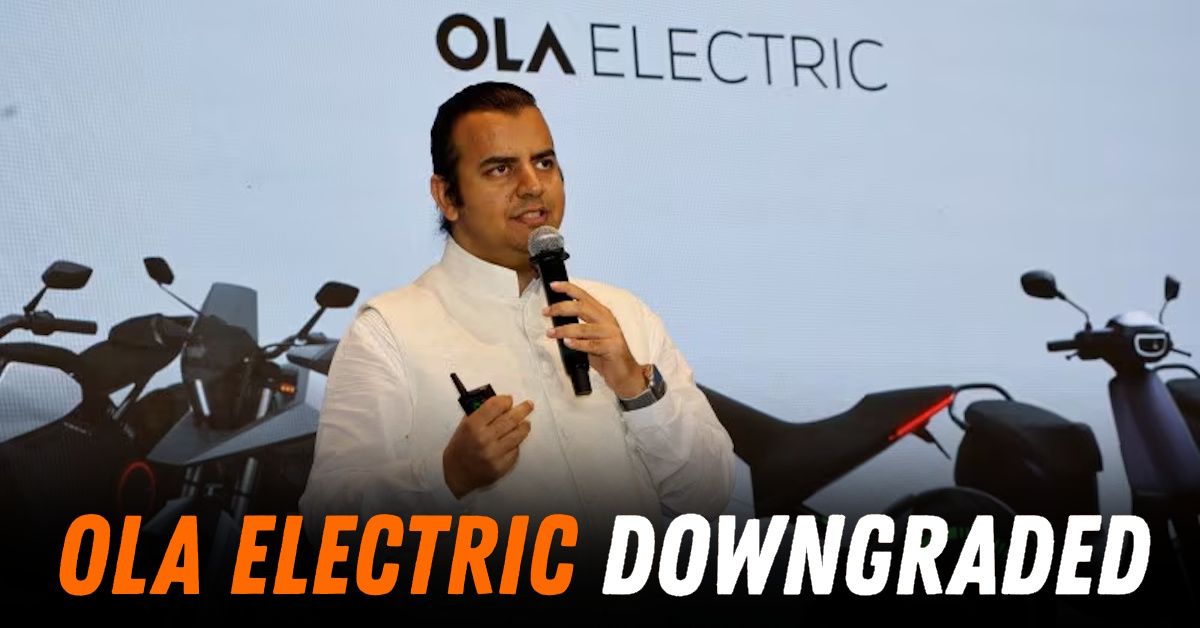Ola Electric In More Trouble: ICRA Downgrades as Sales Slump


Ola Electric, once the torchbearer of the electric two-wheeler revolution, finds itself navigating turbulent waters. The recent downgrade by ICRA, from 'A (Negative)' to 'BBB+ (Negative)', underscores the mounting challenges the company faces amidst declining sales and operational hurdles.
In April 2025, Ola Electric's vehicle registrations plummeted to 19,709 units, a significant drop from over 34,000 units the previous year. This decline is particularly concerning given the overall growth in the electric two-wheeler market. While Ola managed to regain the top spot in April with 11,330 units sold, capturing a 23% market share, the broader trend indicates a loss of momentum. The company's total sales for FY25 stood at 344,009 units, a modest increase from 329,947 units in FY24, suggesting a plateauing growth trajectory.
The sales slump has had a cascading effect on Ola's financial health. ICRA estimates the company's full-year losses for FY25 could widen to ₹1,900–2,000 crore, up from ₹1,600 crore in FY24. In the December 2024 quarter alone, Ola posted a net loss of ₹564 crore, compared to ₹376 crore a year earlier. The company's operating margins have remained negative, with a 9MFY25 operating margin of -26.7% compared to -22.7% in FY24.
Ola's challenges aren't limited to sales and finances. In February 2025, the company terminated contracts with two registration agencies, disrupting scooter registrations. Although Ola claimed it sold 25,000 vehicles that month, only about 8,500 were registered, prompting scrutiny from regulatory authorities. The company later clarified that around 1,400 confirmed orders for its yet-to-be-delivered e-bike Roadster X were included in February’s sales tally.
Separately, the market regulator issued a warning to Ola Electric for sharing company-related information on social media before disclosing it to investors, highlighting lapses in corporate governance.
Customer dissatisfaction has been mounting, with several buyers voicing concerns about delayed deliveries after full payment. A check at several stores across major cities found that delivery timelines had stretched to 20–45 days due to registration delays.
In response, Ola announced plans to expand its sales and servicing network by adding 10,000 partners by the end of 2025. This move aims to address the backlog and improve after-sales service, which has been a significant pain point for customers.
Ola Electric's stock performance reflects the company's current challenges. Since its IPO in August 2024, where shares were priced between ₹72 and ₹76, the stock has seen a significant decline. As of May 2025, shares are trading around ₹47.4, marking a drop of approximately 38% from the IPO price. This fall underscores investor concerns over the company's financial health and operational stability.
Ola Electric's journey from a market leader to a company facing mounting headwinds serves as a cautionary tale in the fast-evolving electric vehicle sector. While it has taken steps to address its issues - such as expanding its service network and clarifying discrepancies in sales reporting - the road to recovery will demand more than damage control.
The electric vehicle market continues to grow, and with increasing competition from other established players, Ola must demonstrate that it can evolve quickly and sustainably. Fixing customer service bottlenecks, improving transparency, and ensuring consistency in operations will be crucial. Whether the company can navigate these challenges and regain its footing remains to be seen. For now, the downgrade serves as a clear sign that all is not well under the surface.